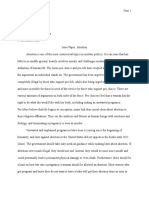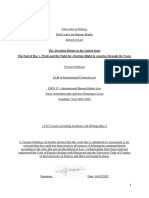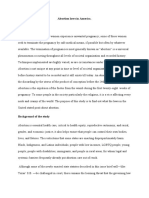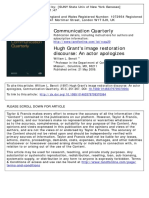0% found this document useful (0 votes)
198 views12 pagesAnnotated Bibliography
This document contains summaries of 6 sources related to abortion rights:
1) A USA Today article discussing abortion access in swing states being determined by local elections.
2) A study analyzing the negative health impacts of provider restrictions on abortion outcomes.
3) A legal analysis reflecting on the Roe v. Wade case and recent overturning of abortion rights.
4) A personal account of a woman's difficult experience obtaining a late-term abortion for medical reasons.
5) An article by ACOG explaining ectopic pregnancies and need for treatment.
6) A source discussing the past and future of abortion rights in the US after Roe v. Wade.
Uploaded by
api-625383717Copyright
© © All Rights Reserved
We take content rights seriously. If you suspect this is your content, claim it here.
Available Formats
Download as DOCX, PDF, TXT or read online on Scribd
0% found this document useful (0 votes)
198 views12 pagesAnnotated Bibliography
This document contains summaries of 6 sources related to abortion rights:
1) A USA Today article discussing abortion access in swing states being determined by local elections.
2) A study analyzing the negative health impacts of provider restrictions on abortion outcomes.
3) A legal analysis reflecting on the Roe v. Wade case and recent overturning of abortion rights.
4) A personal account of a woman's difficult experience obtaining a late-term abortion for medical reasons.
5) An article by ACOG explaining ectopic pregnancies and need for treatment.
6) A source discussing the past and future of abortion rights in the US after Roe v. Wade.
Uploaded by
api-625383717Copyright
© © All Rights Reserved
We take content rights seriously. If you suspect this is your content, claim it here.
Available Formats
Download as DOCX, PDF, TXT or read online on Scribd
/ 12























































































